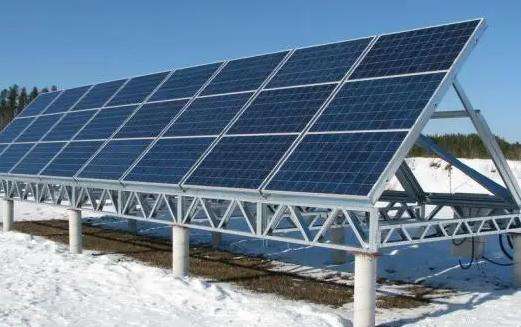The amount of electric energy generated by each rotation of a wind energy generator is also different. For example, the most common 2MW direct-drive wind energy generator can produce 2,000 electric energy every 60 minutes when the wind energy is sufficient and stable. degree of electricity.
It takes 3.5 seconds for the fan blades to rotate once, and 60 minutes is 3600 seconds. Therefore, the amount of electricity generated by the generator per second is 0.56 degrees, so the amount of electricity generated by the wind energy generator fan for each revolution is The power generated is 0.56×3.5 seconds, which is 1.94 kilowatt-hours of electricity.
Extended informationBecause the wind volume is unstable, the wind turbine outputs alternating current of 13~25V, which must be rectified by the charger and then charge the battery to make the wind power The electrical energy produced by the generator is converted into chemical energy. Then use an inverter power supply with a protection circuit to convert the chemical energy in the battery into AC 220V mains power to ensure stable use.
Mechanical connection and power transmission: The horizontal axis fan blades are connected to the universal elastic coupling through the gearbox and its high-speed shaft to transmit the torque to the drive shaft of the generator. This coupling should be Has good damping and vibration absorption properties.
Performed by absorbing the appropriate amount of radial, axial and certain angular deflections, and the coupling can prevent the overload of the mechanical device. The other type is the direct-drive fan blades, which are directly connected to the motor without passing through the gearbox. Type of fan motor
Baidu Encyclopedia - Wind Turbine
One circle of wind turbine How much electricity can it generate?
A megawatt wind turbine can produce about 1 kilowatt of electricity when it rotates once.
A wind turbine is a device that converts wind energy into electrical energy. It is mainly composed of blades, generators, mechanical components and electrical components. Depending on the axis of rotation, wind turbines are mainly divided into two categories: horizontal axis wind turbines and vertical axis wind turbines. Currently, horizontal axis wind turbines occupy the mainstream position on the market.
The principle of wind power generation is to use wind power to drive the windmill blades to rotate, and then use a speed increaser to increase the speed of rotation to prompt the generator to generate electricity. According to current windmill technology, power generation can begin at a breeze speed of about three meters per second (the level of breeze).
Extended information:
For a 1.5MW wind turbine, the generator rotates about 1,800 times a minute, generates 1,500 kilowatt-hours of electricity per hour, and the impeller rotates about 18 times a minute. This is directly related to the size of the unit. Generally speaking, level 3 winds are valuable for utilization. However, from an economic and reasonable perspective, wind speeds greater than 4 meters per second are suitable for power generation.
According to measurements, a 55-kilowatt wind turbine has an output power of 55 kilowatts when the wind speed is 9.5 meters per second; when the wind speed is 8 meters per second, the power is 38 kilowatts; the wind speed When the wind speed is 6 meters per second, it is only 16 kilowatts; when the wind speed is 5 meters per second, it is only 9.5 kilowatts. It can be seen that the stronger the wind force, the greater the economic benefits.
One turn of wind power can generate 100 kilowatt hours. For a 1.5-megawatt wind turbine, the generator spins about 1,800 revolutions per minute, producing 1,500 kilowatt-hours of electricity an hour. The impeller rotates 18 times per minute. This is directly related to the capacity of the unit. According to measurements, a 55kW wind turbine has an output power of 55kW when the wind speed is 9.5m per second. When the wind speed is 8 meters per second, the power is 38 kilowatts; when the wind speed is 6 meters per second, the power is only 16 kilowatts; when the wind speed is 5 meters per second, the power is only 9.5 kilowatts. It can be seen that the greater the wind force, the greater the economic benefits.














